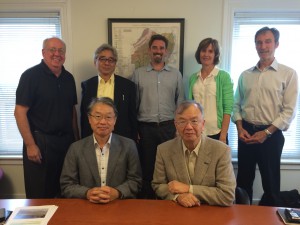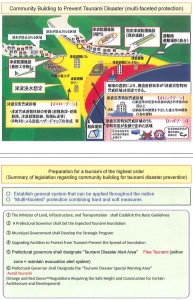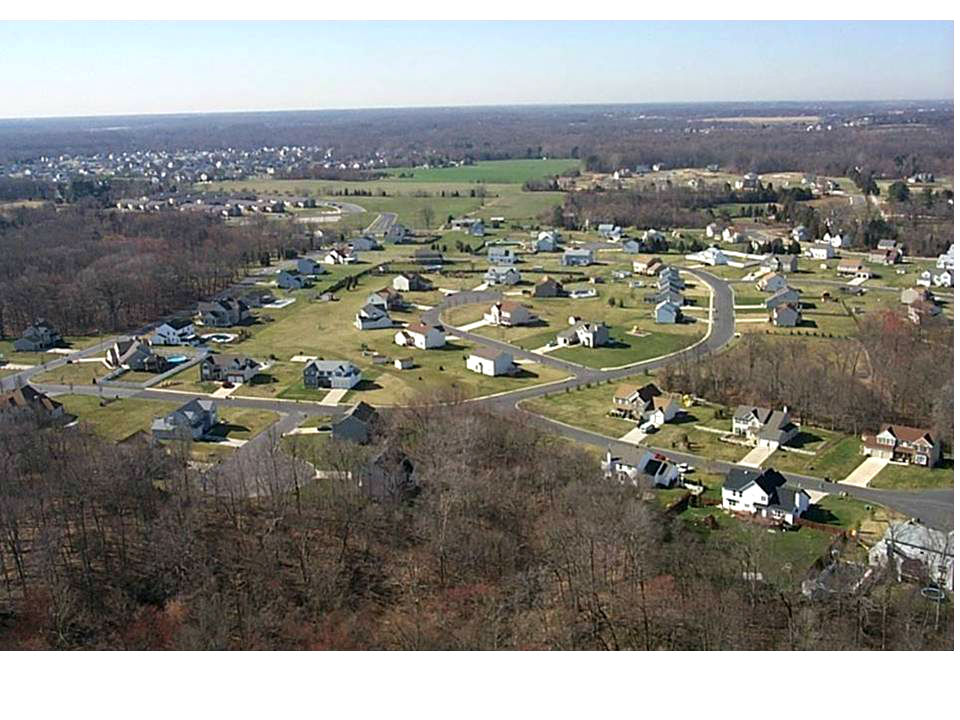New Jersey Future Blog
Delegation From Japan Visits To Compare Notes on Disaster Preparedness
September 11th, 2014 by Peter Kasabach

L to R, front row: Katsumi Seki, visiting professor, Graduate School of Management, Kyoto University; Yoshiaki Kawata, director and professor, Research Center for Social Safety Science, Kansai University. Back row: Dave Mammen, church administrator, Rutgers Presbyterian Church; Ichiro Matsuo, deputy director, Research Institute for Disaster Mitigation and Environmental Studies, Crisis & Environment Management Policy Institute; Joel Challender, researcher, Crisis & Environment Management Policy Institute; Chris Sturm, state policy director, New Jersey Future; David Kutner, recovery planning manager, New Jersey Future. Photo: Peter Kasabach
On Sept. 9 a small delegation of disaster-preparedness experts from Japan came to the New Jersey Future offices to discuss policy, planning and local capacity-building. This was just one stop on their multi-day tour of post-Sandy America. They had come to learn as much as possible in preparation for dealing with the increasing frequency of natural disasters facing Japan.
Some of the highlights from the discussion:
Local recovery planning managers. New Jersey Future explained this nationally significant model that embeds planning managers in specific hard-hit towns and assists local officials with recovery implementation, risk assessment and community-engaged, future-oriented planning. Representatives from Japan emphasized the importance of local capacity and that this continues to be a challenge in Japan. New Jersey Future noted that this landmark program was funded by private philanthropic efforts – New Jersey Recovery Fund, Merck Foundation and others – and that state and federal government in the United States had yet to embrace its importance.
Inter-governmental coordination. The Japanese governmental structure is fairly similar to that in the United States, each having the equivalent of federal, state and local governments. The Japanese central government recently passed legislation establishing a protocol for disaster preparation. To paraphrase, the federal government establishes basic guidelines for assessing and responding to risk. The state adopts a risk-assessment protocol and conducts the assessment for towns. Towns develop strategic plans to address the predicted risks, including where and when to protect important infrastructure and where and when to exit high-risk areas (see chart). This is very similar to a model that groups like New Jersey Future are championing in this country, but we still have a ways to go.
Communicating risk. The Japanese non-profit sector is not as fully developed as that in the United States, especially in areas of policy and planning. This creates a large communication chasm between scientists who assess the risks in technical terms and political decision-makers that are accountable to the public. Without knowledgeable not-for-profits to play the role of translator, Japanese media are not fully able to communicate issues of risk to the public in ways that are relevant to them. New Jersey Future’s local property-tax risk assessment, developed with Princeton Hydro, was seen as a good model for taking complicated data analysis and translating it into something that the community can understand and will care about. The delegation was also interested to hear about the Carnegie Mellon researcher working with New Jersey Future to conduct surveys in affected communities to understand better how people perceive risk and the best ways to communicate about these dangers.
Economics driving consolidation. In Japan, as more people, especially younger people, began moving to cities, the smaller, more rural towns felt the financial pinch, and needed the central government to provide them with additional support. When that burden became significant, the central government began requiring strategic consolidations of smaller towns that could no longer stand on their own financially. While New Jersey’s substantial wealth makes this kind of pressure only a distant possibility, it does demonstrate the strategic benefit of combining towns that are not large enough to plan effectively or provide services efficiently. In Japan, this dynamic was magnified further since many residents left behind in smaller towns represented an aging population with lower incomes and greater needs.
It’s always beneficial to connect with people in other parts of the world and to hear how they deal with similar policy and planning challenges. And it continues to surprise me how very similar the challenges are and how difficult it is to implement solutions, however rational and proven, if they represent significant change.

















